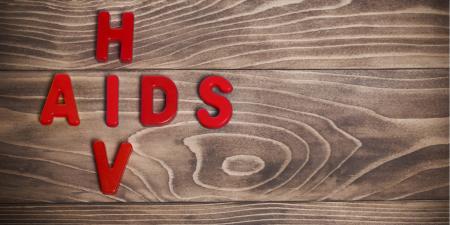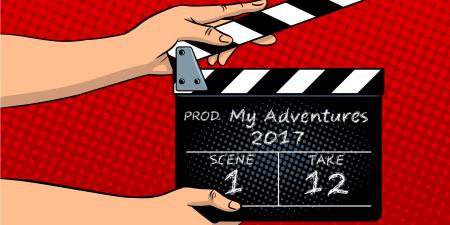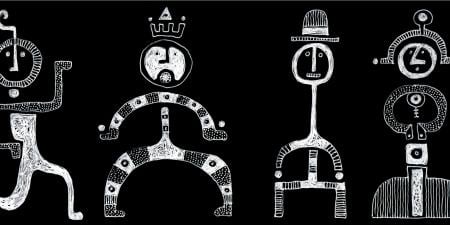Several nights each week, thousands of medical students, alone and in groups, watch programs such as ER, House and Grey's Anatomy. Since its inception in the 1960s, the medical drama has been one of television's most popular genres, but what is its specific appeal to medical students? What viewing pleasures does it evoke and how is this enjoyment related to the development of doctors-in-training? By taking the full range of these pleasures seriously—even those "guilty" popular pleasures associated with fantasy and melodrama—we may better appreciate the pedagogical possibilities and limitations of television dramas in the education of medical students.
Television medical dramas have always claimed varying degrees of clinical accuracy, but it is probably only since the debut of ER in 1994 that this commitment to accuracy has captured the imagination of a large medical student audience [1]. ER regularly depicted the wounded and bleeding body, and the jargon used to describe and treat such cases, with new levels of explicitness and detail, setting a standard that would be followed by such currently popular programs as House and Grey's Anatomy. To medical educators and students, these programs offer a host of dramatic live-action tutorial cases of unprecedented quality. In any given episode, student viewers are exposed to an array of patient scenarios, technical procedures and medical terminology that contributes, in some manner, to their education.
Not surprisingly, some educators have recognized the pedagogical value of the genre and use video clips during lecture to illustrate and amplify concepts they are trying to convey. Other professors might simply refer to scenarios from the programs in their conversations with students when a similar case is under discussion. Medical dramas have the advantage of presenting patient scenarios in a more engaging format than do individually produced illustrations of clinical data. They contextualize illness and disease within narrative arcs structured by rich characterization, emotional and psychological depth, and story-line intrigue, and for this reason many students appreciate them as entertaining ways to learn—as enjoyable accompaniments to their clearly more substantive and supervised formal education.
Of course, there are serious limitations to the value of these programs, particularly if they are assessed solely on the basis of their purported clinical accuracy. Medical cases are introduced and resolved within the space of a single one-hour episode, and this temporal compression necessarily schematizes the complexity, ambiguity and uncertainty that occur in real medical practice. In the interest of narrative economy, medical dramas drastically reduce the number of agents who contribute to the complex health care system; we frequently encounter the impossible figure of the physician who takes blood, runs lab tests and operates a CT scanner—all before scrubbing in for surgery. To build and maintain story-line intrigue, medical dramas almost always develop a tangled web of personal romances and professional rivalries that frequently violate the ethical and professional codes by which the overwhelming majority of physicians operate. In their attempts to craft compelling plots, the programs' creators often resort to miracle cures that constitute medical misinformation—the consistent overuse of cardiopulmonary resuscitation and violation of the strict policies surrounding organ transplant procedures are two of the most obvious examples [2]. As the critics frequently remind us, in the contest between medical accuracy and entertainment value, entertainment always wins.
Even those educators who recognize some value in the dramas often maintain an arm's-length distance from them, cautioning students to distinguish between the useful depictions of medical procedures and their more frivolous portrayals of imaginary interpersonal dramas. But here we encounter a contradiction worth exploring. Medical dramas provide such engaging tutorial cases by virtue of their televisual and cinematic qualities (dramatic urgency, narrative intrigue, emotional depth, aesthetic composition), yet it is precisely these qualities, it seems, which compromise their legitimacy as realistic depictions of medical practice. The very qualities that contribute to uniquely compelling enactments of medical scenarios also threaten to undermine their objective accuracy. How are we to navigate this impasse?
One way is to supplement an objective scientific evaluation of the programs with a psychosocial reading of them as cultural texts. Television programs effectively portray the psychosocial components of clinical practice, offering students an opportunity to think through the complex human experience of disease and illness [3]. These dramas allow medical students to engage at an intellectual and emotional level with other people's experiences of socially significant health issues such as poverty, domestic violence, substance abuse, and chronic and critical illness, to name a few. They mine social attitudes regarding race, class, sex, gender and ethnicity, as rich sources of dramatic conflict, and in doing so broaden the definition of health and illness to include its many social determinants. Crucially, this exploration is staged at a largely interpersonal and emotional level—patients' ability or inability to cope with profound psychosocial transitions brought on by disease and illness and the feelings of grief, remorse, vulnerability and fear that often accompany serious illness. They also dramatize physicians' competency, or lack thereof, in helping patients through this process [4].
In a study measuring the effectiveness of using medical dramas to teach better communication with patients in highly charged emotional situations, McNeilly and Wengel found that, after viewing and discussing clips from the programs in a clerkship seminar, students demonstrated quantitative improvements in their communications skills [5]. They were better able to discuss the clips using terms such as "boundary setting" and "countertransference" between physicians and patients and the breaking of bad news in terms of Buckman's model. By examining these video clips in a structured environment, they were encouraged to examine their ownprocesses of identification and countertransference in addition to those taking place between patients and physicians on-screen. By analyzing the emotional exchanges portrayed on-screen, and their emotional responses to such scenarios, students learned that effective treatment of emotionally troubled patients required them to recognize, experience and tolerate their own strong reactions which they might otherwise repress and deny.
Such an appreciation of the active viewer is fundamental to any serious consideration of the appeal of medical dramas to a significant portion of the medical student population. The relationship between audiences and media texts is more complex than is commonly recognized in popular discourse. Audiences do not passively receive messages in media texts, they actively engage with them to negotiate meanings according to their personal sensibilities, but also according to socially determined categories such as race, class, gender and nationality.
Consider again the idea that each episode offers the medical student a handful of tutorial cases. We can reasonably assume that students enjoy learning procedures and jargon as they are explained in the programs—that is, by passively receiving information that contributes to their knowledge.
Yet something more complex is also probably occurring. In exploring her own fascination with ER when she was a Harvard Medical School student, physician Ellen Lerner Rothman recalls that "more than the medicine, it was the excitement of watching my appreciation of the show broaden as my understanding of the clinical issues and the dynamics of the patient-doctor relationship deepened" [6]. This is more complex than passively ingesting medical information; for Rothman, ER provided the pleasure of watching herself gradually become more a part of the profession to which she aspired. Furthermore, this was not the solitary pleasure of a lone viewer, but a communal pleasure relating to Rothman's membership in her Harvard Medical School class. For Rothman, ER played a significant part in facilitating the important social bonds that constitute group identity. Just as many students gather to watch Grey's Anatomy or House today, members of Rothman's class gathered to watch ER and experienced their growing capacity to decode technical jargon and procedure as "moment[s] of arrival symbolizing our induction into the medical community. … another epiphany in our acculturation into the medical world" [7].
If medical dramas so easily incite emotions pertaining to earning membership in a demanding and prestigious profession, it is surely because the genre treats this process of identity transformation as one of its central themes. By far, most medical dramas are set in teaching hospitals, allowing the writers to exploit the rich dramatic potential in the often-difficult transmission of professional knowledge, wisdom and authority between doctors and students, or between senior and junior doctors. Teacher-student relationships are frequently vexed with powerful emotions, and these shows concoct scenarios to expose those emotions in all their force. Rothman recalls watching an ER episode in which third-year medical student John Carter fails to elicit a single response from an elderly woman during his patient interview. The senior physician returns, easily obtains the pertinent information from the patient, and Carter is humiliated. Rothman describes the response from the group with whom she watched the episode—all had just completed their own first patient interviews: "At that moment there was a palpable silence in the room. No one said anything, but we all thought, That was me. The intimidation of talking to the patient, the pressure to get the 'right' information, the frustration at our own lack of ability: That was me" [8].
The group's rapt attention and unspoken agreement at Carter's humiliation suggests that this scene touched upon their own fears of incompetence, failure and humiliation, fears that are natural in the demanding and competitive environment of medical school and practice but are rarely acknowledged in formal education, at least in any kind of productive manner. Indeed, Carter's eventful transition from student to doctor under the unforgiving eye of Dr. Peter Benton provided one of ER's most compelling story lines in its early seasons. What made this story line so rich was Carter's struggle to learn from Benton's expertise but also from his inadequacies. In other words, Carter became his own doctor by recognizing his mentor's strengths and weaknesses. Medical dramas engage students' imaginations because they often stage complex scenarios from this mix of potent, often contradictory, and generally unexpressed field of emotions. As Rothman explains,
Through the ER physicians, residents, and medical students, my classmates and I explored who we wanted to be and what we were afraid we might become. We developed a paradigm for how we wanted to respond to our patients and explored how we would feel if we were unable to uphold it [8].
Medical dramas frequently explore personal growth and struggle in what can fairly be described as an unrealistic manner. For this reason, some might suggest that the genre's capacity to offer insight into the social relations and emotional forces experienced by physicians is compromised, once again, by lack of accuracy. But it is worth questioning the assumptions implicit in this critique, assumptions that rely on confidence in the easy distinction between truth and fiction. The medical profession's legitimacy rests largely on its commitment to scientific rigor. But the role of a physician remains, in many ways, a performative one. That is, medical students become full-fledged physicians as they learn the rules of professional conduct in their interactions with patients and colleagues. The education of a medical student involves acquiring vast amounts of technical information, but it is also concerned with learning to convincingly "perform" a professional identity.
Medical dramas are uniquely capable of exploring the difficulties of the latter—the challenge of answering sometimes impersonal institutional demands while honoring one's own individual sense of fairness and sympathy; of presenting an air of competency, calm and compassion to a patient in critical condition; of confronting patients' fears of death and their hopes that recovery will arrive by the hands of their doctor. As Michael M. O'Connor concludes in a commentary on ER's appeal to medical students,
ER forces students to think carefully about the distinction between fantasy and reality in the construction of physicians' professional identity. If medicine lends itself so readily to television fiction, it is perhaps because the medical profession itself is built on social fictions surrounding the authority and functions of doctors [9].
These "social fictions" are not simple falsehoods. They include the social and historical values that, in part, structure relations in the health care system, as well as the fears, fantasies and desires that infuse people's experience of illness and its treatment. To consider the importance of social fictions to medical practice, then, is not to denigrate the profession, but to acknowledge its enormous complexity as a humanistic science. Rather than simply lamenting the dramatic excesses which compromise clinical accuracy in these programs, we should encourage students to follow Rothman's and O'Connor's lead and critically reflect upon their own investments in the social fictions these programs dramatize. To plumb the meanings of our own pleasures is never easy, but by drawing from the fields of media and cultural studies in a structured learning environment, students can investigate the social formation of such pleasures and avoid a purely introspective and personal self-examination. These academic disciplines show us that we impoverish the multiple, often contradictory meanings of popular culture when we submit them to an easy distinction between truth and falsity. There are times when melodrama is the only narrative mode adequate to the primal emotions addressed in these shows. To simply deride and dismiss their dramatic value is to retreat from considering their full and legitimate significance to the sizeable number of medical students who watch them.
References
-
Medical dramas in the 1950s and 1960s advertised their use of medical consultants, and awarded the AMA veto power over scripts so that they might display the AMA's stamp of approval at the end of each episode. As Joseph Turow details in his institutional analysis of the medical drama genre, the AMA checked scripts for medical accuracy, but also to ensure that the programs presented an exclusively positive image of the modern physician. See, Turow J. Playing Doctor: Television, Storytelling, and Medical Power. New York, NY: Oxford University Press; 1989.
-
In a rigorous empirical study, Diem and colleagues provide quantitative evidence proving the radical disparity between the effectiveness of cardiopulmonary resuscitation (CPR) as it is portrayed in popular medical dramas and as it occurs in actual medical practice. Diem SJ, Lantos JD, Tulsky JA. Cardiopulmonary resuscitation on television. Miracles and misinformation. N Engl J Med.1996;334(24):1578-1582.
-
Midmer D. Cine-ed: Using films to teach medical learners. BMJ Careers. 2004:329;140-141. Accessed February 14, 2007.
-
Karpf A. Doctoring the Media: The Reporting of Health and Medicine. London, UK: Routledge; 1988.
- McNeilly DP, Wengel SP. The "ER" seminar: teaching psychotherapeutic techniques to medical students. Acad Psychiatry. 2001;25(4):193-200.
-
Rothman EL. White Coat: Becoming a Doctor at Harvard Medical School. New York, NY: Perennial; 2000.
-
Rothman, 25.
-
Rothman, 26.
-
O'Connor MM. The role of the television drama ER in medical student life: entertainment or socialization? JAMA. 1998;280(9):854-855.



